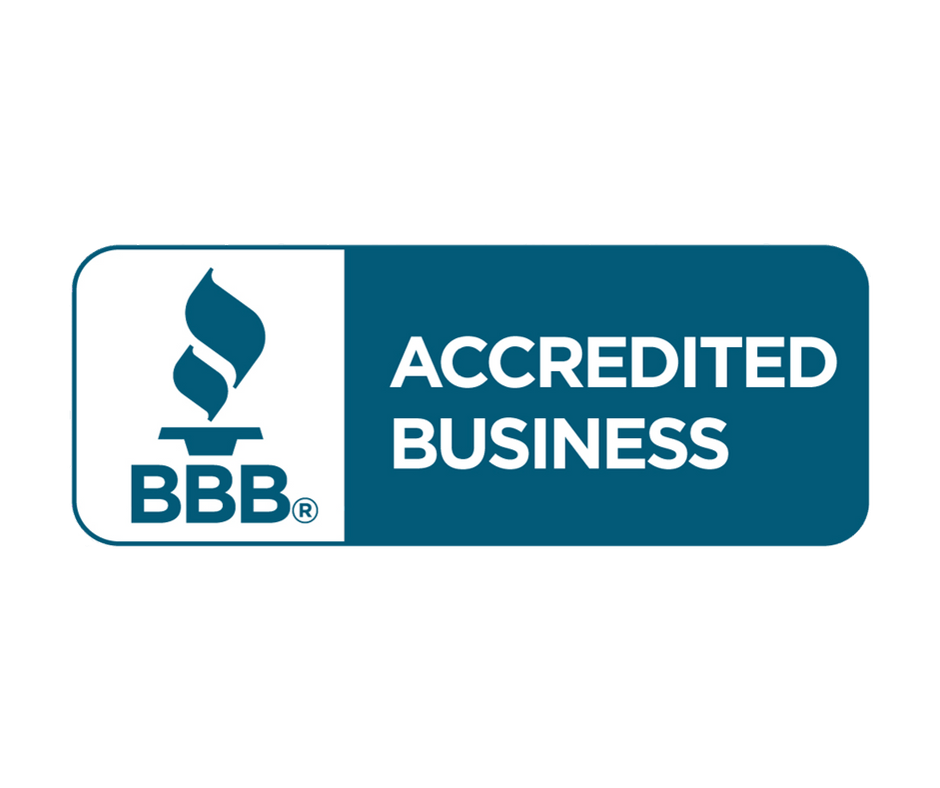How to Sell a House with Mold
How to Sell a House with Mold Contamination
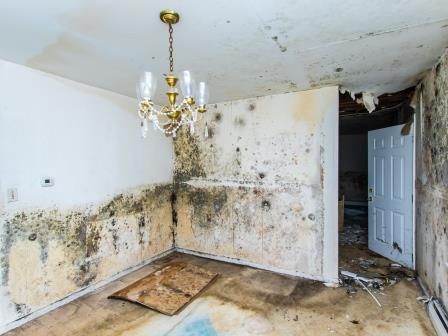
In this article, we will discuss the different types of mold, how to identify them, and review how you can sell a house with mold contamination.
Mold is a lot like a venomous snake. It can creep up on you without you knowing and cause illness and possibly death, not to mention the extensive property damage mold can create. Many times, it is lurking between walls, in ceilings, the attic, or the crawl space undetected for months or years. Other times, a water heater breaks, and a short time later, the home is filled with mold.
The first step in learning how to sell a house with mold begins with a review of what mold is, the various types of mold that are usually found in homes, how to recognize mold, what molds pose the greatest health risk, and which ones can destroy your home’s structure.
Selling a House with Mold
Do You Fix It or Sell Home As-Is?
Should you remediate the mold and repair the home or sell home as-is to a home cash buyer that has “Sell Home As-Is” programs? To get to the answer, we need to take a look at the different types of molds, their effect on people, our homes, and review your options.
What is Mold?
Mold is a living fungus that is found throughout nature. No one knows exactly how many different types of molds exist but most scientists agree there are thousands and perhaps tens of thousands. Most, but not all molds grow in dark and damp environments with moderate temperatures. Many molds are harmless to humans but some can be toxic and pose an extreme health risk.
How to Recognize Mold
Mold comes in many different shapes, sizes, and colors but they all have a few things in common that you should be aware of. They usually appear as discolorations on walls, floors, ceilings, or other surfaces and have a furry or moss-like appearance. Mildew mold is the most common household mold and appears as a collection of brown-black dots. Many molds produce an unpleasant musty or earthy smell, especially when the mold covers a large area and is active.
The 3 Categories of Mold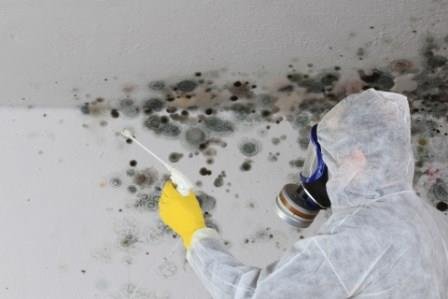
The different types of mold can generally be broken down into 3 categories.
Allergenic molds can cause allergic reactions and worsen conditions for people with asthma.
Pathogenic molds can create additional health problems in people who have underlying medical conditions.
Toxigenic molds are the most dangerous as they introduce toxic substances into the air and surrounding environment that can cause severe illness and potentially death.
The 10 Most Common Types of Mold Found in Our Homes
(click images to enlarge)
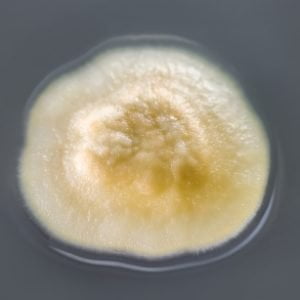 Acremonium is a toxic mold that usually grows in our air conditioners, humidifiers, drain pans, and around window sealants. This mold can be difficult to identify because its appearance changes over time. It may start as a small moist spot but then change into a fine powder that also can vary in color from white, pink, gray, and orange.
Acremonium is a toxic mold that usually grows in our air conditioners, humidifiers, drain pans, and around window sealants. This mold can be difficult to identify because its appearance changes over time. It may start as a small moist spot but then change into a fine powder that also can vary in color from white, pink, gray, and orange.
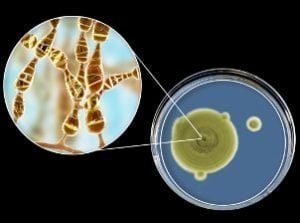 Alternaria is the mold that you commonly find around showers, baths, and other areas that get wet often. This mold is allergenic and should be treated as soon as it appears. Bleach and other common household cleaners can eliminate this mold.
Alternaria is the mold that you commonly find around showers, baths, and other areas that get wet often. This mold is allergenic and should be treated as soon as it appears. Bleach and other common household cleaners can eliminate this mold.
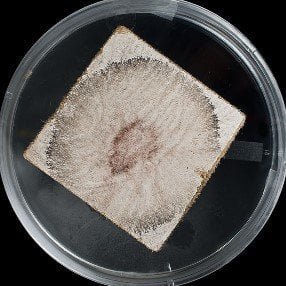 Aureobasidium is a mold that can typically be found growing behind painted surfaces, wooden finishes, and wallpaper that is usually black, brown, or pink. This mold is allergenic that usually causes eye and skin irritation.
Aureobasidium is a mold that can typically be found growing behind painted surfaces, wooden finishes, and wallpaper that is usually black, brown, or pink. This mold is allergenic that usually causes eye and skin irritation.
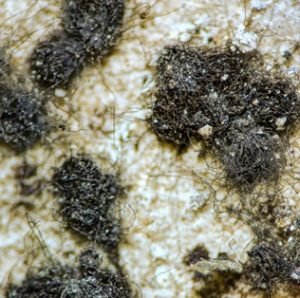 Chaetomium is a mold with a cotton texture that typically starts white but darkens over time. This mold thrives in moisture from roof leaks, plumbing leaks, and basements with high moisture. This mold is typically allergenic but has been known to be pathogenic when exposed to a person with a compromised immune system.
Chaetomium is a mold with a cotton texture that typically starts white but darkens over time. This mold thrives in moisture from roof leaks, plumbing leaks, and basements with high moisture. This mold is typically allergenic but has been known to be pathogenic when exposed to a person with a compromised immune system.
 Cladosporium mold is different because it is capable of living in a cold environment. The mold has a velvety type texture that drab green to brown color that lives in fabrics, upholstery, and other textiles. It has also been found in cabinets and under floorboards. This is an allergenic mold that causes nasal, lung, and skin irritation.
Cladosporium mold is different because it is capable of living in a cold environment. The mold has a velvety type texture that drab green to brown color that lives in fabrics, upholstery, and other textiles. It has also been found in cabinets and under floorboards. This is an allergenic mold that causes nasal, lung, and skin irritation.
 Fusarium is another mold that can live in cold environments that can be allergenic and toxigenic. This mold usually grows in carpeting, fabrics, and wallpaper is white, pink, or reddish. The mold is known to cause skin infections, sore throat, runny nose, sneezing, and itchy eyes. This mold can produce toxins that damage the nervous system and long-term exposure can cause severe and life-threatening bone infections or brain abscess. Fusarium can spread quickly. If you notice it in one area of your home, you need to carefully inspect the rest of the home for contamination.
Fusarium is another mold that can live in cold environments that can be allergenic and toxigenic. This mold usually grows in carpeting, fabrics, and wallpaper is white, pink, or reddish. The mold is known to cause skin infections, sore throat, runny nose, sneezing, and itchy eyes. This mold can produce toxins that damage the nervous system and long-term exposure can cause severe and life-threatening bone infections or brain abscess. Fusarium can spread quickly. If you notice it in one area of your home, you need to carefully inspect the rest of the home for contamination.
 Mucor is another mold that typically grows in and around air conditioning systems. This is a fast-growing allergenic mold that is a white-greyish color that grows in large patches. Effects of exposure are typically minor, such as allergy and asthma-like conditions but prolonged exposure can cause severe medical conditions.
Mucor is another mold that typically grows in and around air conditioning systems. This is a fast-growing allergenic mold that is a white-greyish color that grows in large patches. Effects of exposure are typically minor, such as allergy and asthma-like conditions but prolonged exposure can cause severe medical conditions.
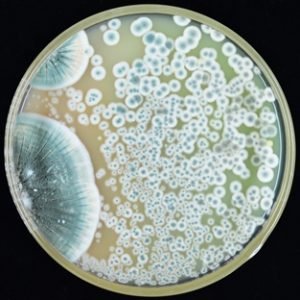 Penicillin is both a beneficial mold for antibiotics as well as an allergenic form of mold. The mold is found where the water damage has occurred and is blue-green with a velvety appearance. This mold easily becomes airborne which allows it to spread and to be inhaled by occupants of the home. Exposure causes allergies and asthma symptoms and prolonged exposure can cause more serious respiratory problems.
Penicillin is both a beneficial mold for antibiotics as well as an allergenic form of mold. The mold is found where the water damage has occurred and is blue-green with a velvety appearance. This mold easily becomes airborne which allows it to spread and to be inhaled by occupants of the home. Exposure causes allergies and asthma symptoms and prolonged exposure can cause more serious respiratory problems.
 Stachybotrys is the black mold that we most often hear about because it is a common toxigenic mold. This mold has a wet-slippery texture that is green-black. This mold grows on cellulose material like paper, cardboard, and raw wood in a high humidity environment. The mold can produce mycotoxins that can cause a range of severe medical conditions, especially in children and infants. Some of the symptoms include chest tightening, persistent cough, nose bleed, fever, and painful headaches.
Stachybotrys is the black mold that we most often hear about because it is a common toxigenic mold. This mold has a wet-slippery texture that is green-black. This mold grows on cellulose material like paper, cardboard, and raw wood in a high humidity environment. The mold can produce mycotoxins that can cause a range of severe medical conditions, especially in children and infants. Some of the symptoms include chest tightening, persistent cough, nose bleed, fever, and painful headaches.
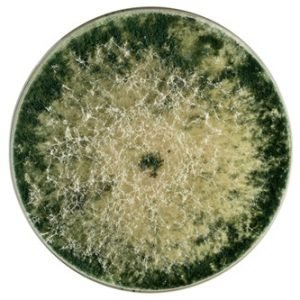 Trichoderma is an allergenic mold that is typically white with green patches. This mold grows rapidly and is usually found within damp wallpaper, carpet, upholstery, and air conditioning systems. There are 5 subspecies, which are generally allergenic. Some types have been known to produce mycotoxins causing similar problems as Stachybotrys. This type of mold contains enzymes that can be very damaging to a home’s wood structure.
Trichoderma is an allergenic mold that is typically white with green patches. This mold grows rapidly and is usually found within damp wallpaper, carpet, upholstery, and air conditioning systems. There are 5 subspecies, which are generally allergenic. Some types have been known to produce mycotoxins causing similar problems as Stachybotrys. This type of mold contains enzymes that can be very damaging to a home’s wood structure.
Due to the potential risks and with many molds looking similar, the average homeowner should not worry, but positively identify a specific type of mold. Instead, you should seek the help of a professional to identify the mold and the extent of the contamination.
Identify the Source of Moisture
Now that we know what we are possibly dealing with and the effects of mold, we need to turn our attention to what allowed the mold to thrive.
Since mold contamination is caused by water infiltration or leaks, we must deprive the mold of a water source. To do that, we must identify the source of the water, such as a roof or pipe leak, poor drainage, and look at what it will take to fix the problem. Fortunately, the repairs are usually minor in comparison to what it takes to remediate the mold and repair the damage caused by the mold.
Many molds circulate in the air or spread by water, they end up under and into areas that can’t be seen or that are not easily accessible. Mold is commonly found in heating, cooling, and ventilating systems requiring these systems to be cleaned, removed, or replaced. The removal of the building materials to access the mold for remediation can create extensive damage which is what causes repairs and remediation to be so costly.
Remediation
The remediation of toxic or severe mold contamination must be conducted by highly trained professionals and is treated as hazardous waste. Many homeowners go into sticker shock when they find how much it will cost to treat the mold and repair the damage. This cost is increased when the people living in the home need to pay for temporary housing until the work is completed. The cost of the hotel, mold removal, demolition, and repairs can become staggering. The remediation must be done right, otherwise, the mold will eventually come back and may cause ongoing health problems.
Insurance Coverage
Mold contamination can cost thousands of dollars to remediate and homeowners are surprised to learn that the cost of removal is typically not covered by homeowners insurance unless the cause of the mold is a covered peril, like a burst water heater or busted pipe. Insurance companies will deny claims that were preventable or have arisen due to maintenance problems, neglect, poor drainage, flooding, and seepage. This includes roof and pipe leaks that have been occurring for a long time. Most insurance agents will advise you to file a claim, then hope for the best, but prepare for the worst. If the claim is covered by the insurance company, hooray!
Selling a Mold-Contaminated Home
Let’s Review Your Options
Selling the Traditional Way
Selling a house with mold contamination the traditional way is not easy. You will need to disclose the mold contamination or there can be severe legal liabilities, but once disclosed, most buyers will run away. You need to ask yourself: Why would a person buy a mold-contaminated home when they can find a home without potential health and structural problems? The answer is simple—they won’t and you probably wouldn’t either. So if you want to sell the traditional way, you will need to remediate the mold and repair the damage.
If the contamination is limited, the damage is minor, the cost manageable, or covered by insurance, most likely your best option will be to pay for the repairs/remediation and sell the home once the work is completed. You will still need to disclose the previous mold contamination so it will be important to document everything that was done to fix the home and remediate the mold. You should expect the traditional sales process to take several months especially with the stigma of mold contamination. But with time and patience, eventually, you will find a buyer.
Sell Home As-Is to a Home Cash Buyer
If the damage and mold contamination is severe, and you do not have the time, finances, and wherewithal to get the home repaired and remediated, you can sell home as-is to OutFactors. We specialize in paying cash for houses in any condition. This is the hassle and risk-free way to sell a home with mold contamination and to get started, all you need to do is answer 4 simple questions. We will do the rest!
With OutFactors, you will sell the home for cash in 1 day and get your cash in 10 days or less, thus avoiding all of the hassles, cost, risk to repair and remediate the mold. We put everything in writing using simple to read contract documents, the same Texas-approved documents used by every real estate agent in the state.
How to Sell Your House with Mold As-Is for Fast Cash
Leave All of Your Mold Problems Behind!
One of the biggest benefits of the OutFactors Sell House As-Is program is how simple and fast it is to get the cash you need when you need it. We take care of the problems, you get the cash. For additional information, please visit OutFactors.com and if you are ready to get your fast and free cash for house offer, please click here. The people at OutFactors are super easy to talk to and will answer all of your questions.
The Bottom Line
Considering the health and structural risks to your home, fixing and selling a house with mold contamination is not something to be taken lightly. If your house has mold contamination and you wish to sell it using traditional methods, have it professionally remediated and repaired before selling it, or sell home as-is to a home cash buyer, like OutFactors.
Want to sell your mold-contaminated home as-is?
Then request your fast and free HIGHEST cash offer from OutFactors!
REQUEST CASH FOR HOUSE OFFER NOW!
 We hope this article was informative and helpful. If you have any questions or would like additional information, we invite you to contact us at OutFactors.com.
We hope this article was informative and helpful. If you have any questions or would like additional information, we invite you to contact us at OutFactors.com.
OutFactors
539 West Commerce Street
Suite 1205
Dallas, Texas 75208
Contact@OutFactors.com
www.OutFactors.com
(800) 420-7030
How to Sell a House with Mold | Sell Home As-Is | OutFactors — Dallas Fort Worth, Texas

